“If you’ve ever experienced any mysterious medical symptoms, chances are you’ve found yourself in that dark forbidden place we’re all too familiar with. Google. Almost any and all odd symptoms can, in one way or another, bring you across a diagnosis for Multiple Sclerosis at some point. Don’t panic. This is because MS symptoms have a funny way of showing up anywhere, everywhere, and the places in-between. Blurry vision? MS. Trouble swallowing? MS. Muscle cramps? MS. Suddenly speaking in tongues? MS. Just kidding, but don’t put it past us.
But you need to always remember two things: Google is a dark, mean place you must never go, and statistically speaking, the odds are in your favor your ailments are caused by something other than this rare, degenerative disease of the central nervous system. For me, however, I was not so lucky.
When I was 27, half of my torso went numb. Exactly half. If you took a marker and drew a line down the middle of my stomach, one side was having a great time and the other side had Irish-goodbyed the party. Google was stumped. My doctors were stumped, too, but I’ll come back to that later.
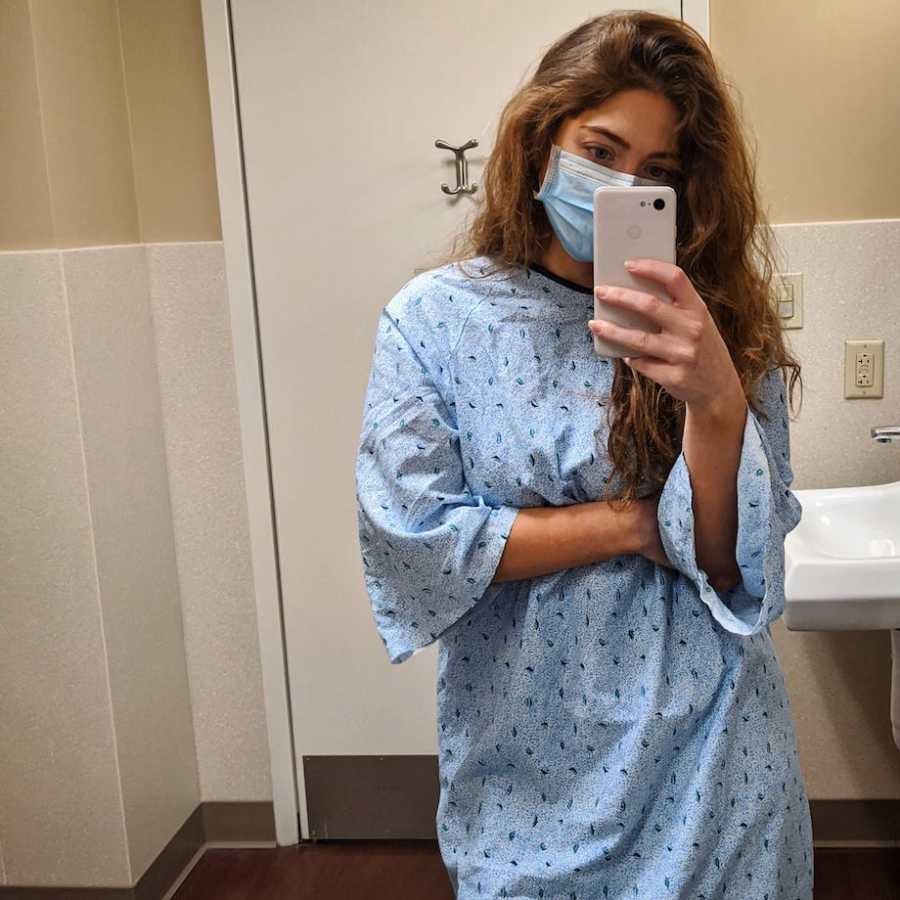
Mystery torso didn’t happen in an instant or overnight, but instead, it crept up slowly on me over the course of a few months. In the beginning, I went back and forth myself, ‘Is this in my head?’ I would scratch and pinch at the right and left sides of my stomach constantly, almost obsessively, to try and disprove one side felt different than the other. At first, the difference was so slight I was able to keep my worries at bay. After several weeks, that gradual numbness increased past the points of deniability.
I remember the day. It was Thanksgiving of 2018, and I was leaning against a wall at my cousin’s house. Laughing, filled with love and gratitude for the family around me, but my mind still trailing back to my odd symptoms, unable to fully focus on anything else. I rested my hand over my stomach and accepted at that moment this was real and not the result of that imaginative, anxiety-riddled brain of mine. I had to accept it had gotten worse and hopelessly enough, it wasn’t the first time strange symptoms appeared for me.

4 years earlier, as a stress-infused college senior, I woke up one morning noticing my leg slightly numb. I couldn’t tell if it was all in my head or not. The obsession began. I was constantly pinching at my legs to see if there was a difference in sensation between the two. Always on the dark side of google, researching what it could be. I would always come to the same conclusion: Multiple Sclerosis. But still, I said, ‘Impossible, this just can’t be.’
I had panic attacks over it. Moments where I lost my breath and couldn’t get it back. I drove for hours and hours just to distract myself. I soared back and forth between ‘It’s nothing’ to ‘It’s the end of the world.’ I just wanted to worry about normal college things like finals and life after graduation.
As a college student, my medical options were limited. I was still getting the hang of adulting, finding my own doctors, and scheduling my own appointments during spring break. While at school, I had access to the college nurse who was also quite limited in diagnostics. Everyone I spoke to was either stumped or nonchalant about my mystery ailment.
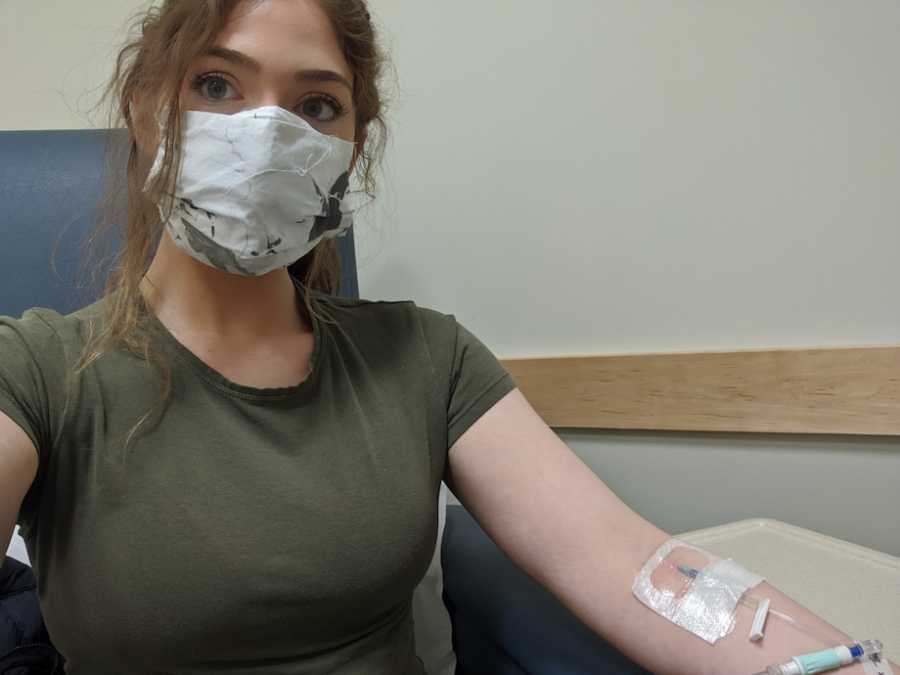
As the numbness in my leg gradually increased to heaviness over the course of a few months, I found myself having trouble walking up the stairs. This phantom detriment would be worse in the morning and get better, almost non-existent by the evening. Weird, I know. I started having increased spasticity in my legs. If you’ve ever had a ‘Charlie horse’ or growing pains, that’s what this means. I would have these painful cramps go up to my calf and down to my toes almost every night.
By this point, the doctor at my school and the one at home both agreed this was a pinched nerve, as we found the numbness ran exactly across my sciatic nerve. In my mind, this was a wave of relief. The best possible case scenario and proof I let my thoughts get the best of me. They put me on a dose of oral steroids to relieve the inflammation and I slowly healed up. Eventually, the stress of this whole time just became ‘That one time in college I convinced myself I had MS.’ Life went on.
Between college and mystery torso, life was somewhat medically uneventful. I still had what I consider to be extreme health anxiety, typically working myself up and convincing myself I had this sickness or that sickness. It’s still something I struggle with to this day. However, now I’ve learned to be more grateful for my hypervigilance over my health.
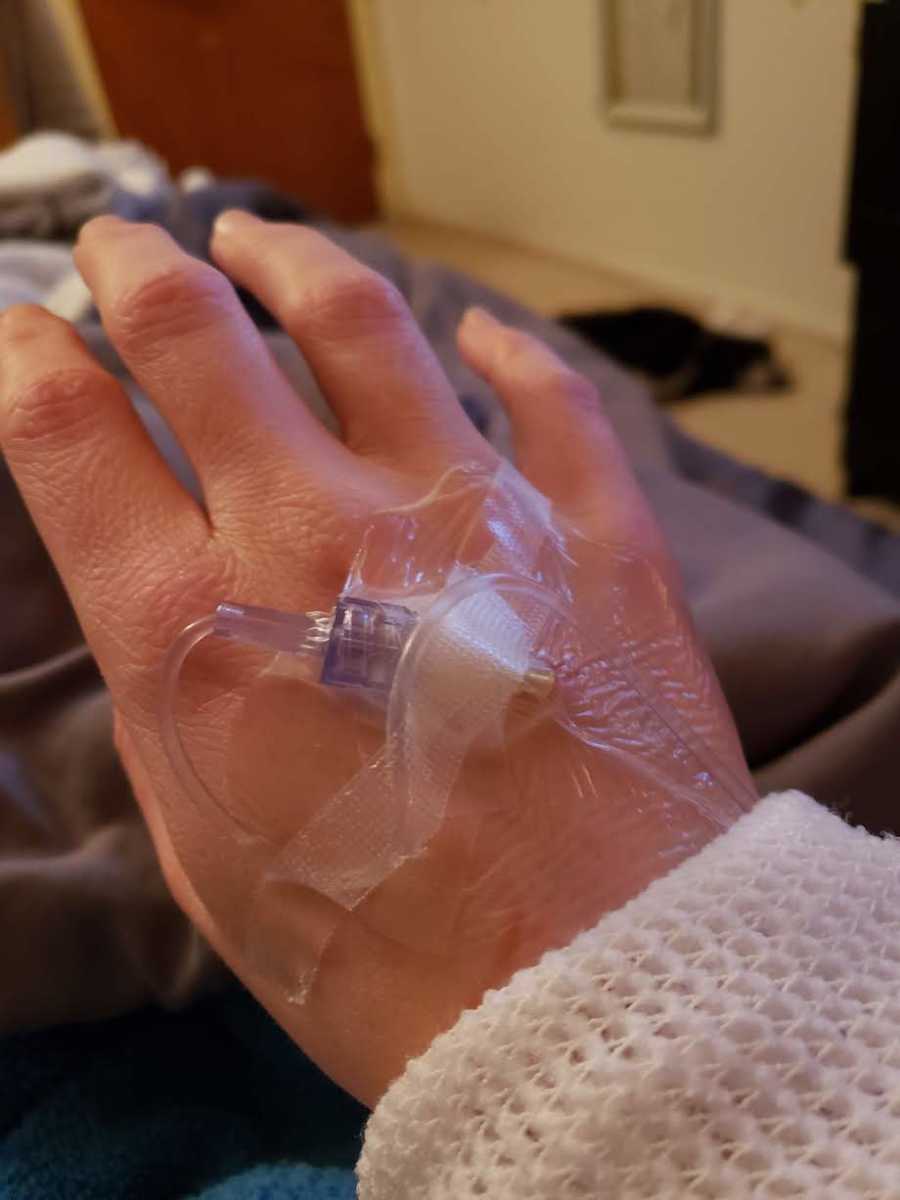
My primary struggle was always fatigue. If you’ve ever experienced excessive fatigue, you know how debilitating it is. You understand the confusion and frustration that comes with being exhausted for no apparent reason almost constantly. It goes past being tired, it’s the type of exhaustion you feel when you’re too tired to even rest and do nothing. The emotional toll it took on me was significant. Especially as a recent college grad, I was seeing so many my age doing incredible things. They were all out in the world being go-getters and achieving so much. Meanwhile, I could hardly find the strength or energy to work my part-time job.
Every job I had, I struggled more than the people around me no matter how hard I tried. I would get so frustrated and angry I couldn’t keep up and I would blame myself. I remember getting tearful in the doctor’s office one day, ‘I’m in my twenties, I shouldn’t be this tired all the time. I can’t do anything, it’s not normal.’
Over the years, I had my thyroid tested three different times, hoping for answers. But the results always came back normal. I convinced myself I was lazy. I pushed myself so hard and wore myself out to exhaustion always feeling the need to prove myself. If I wasn’t at work, then I was at the gym. Afterward, too exhausted to do anything else.
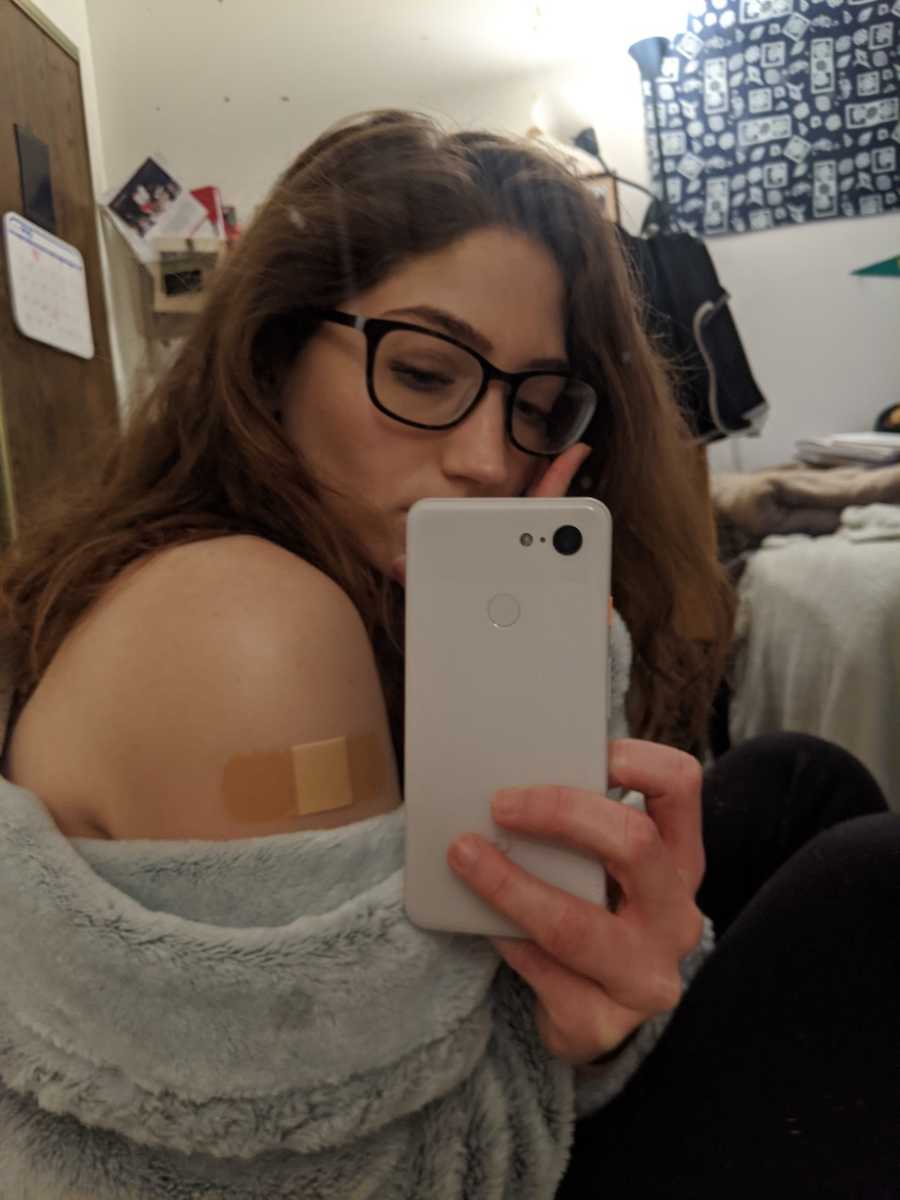
In this time, I also struggled deeply with what I thought was my circulation. I found myself unable to cope with the cold whatsoever. Even mild temperatures, anything under 50 degrees, would send my body into a spiral. Mostly my feet were affected. Going almost completely numb if outside for too long. It would take me a half-hour on the treadmill to regain feeling after walking from my car to the gym doors. I adapted to it because that’s what the human condition inclines for us to do. I convinced myself it was normal, it’s normal right?
My dream, and what I went to school for, was to work with animals in the conservation field. All my jobs and internships were outside and in all weather conditions. I soon struggled to achieve what I wanted to achieve and to be the employee I wanted to be. I found it difficult to grow in the career field I chose for myself and this took a huge toll on my self-esteem. More than once throughout these years, I fell into depression.
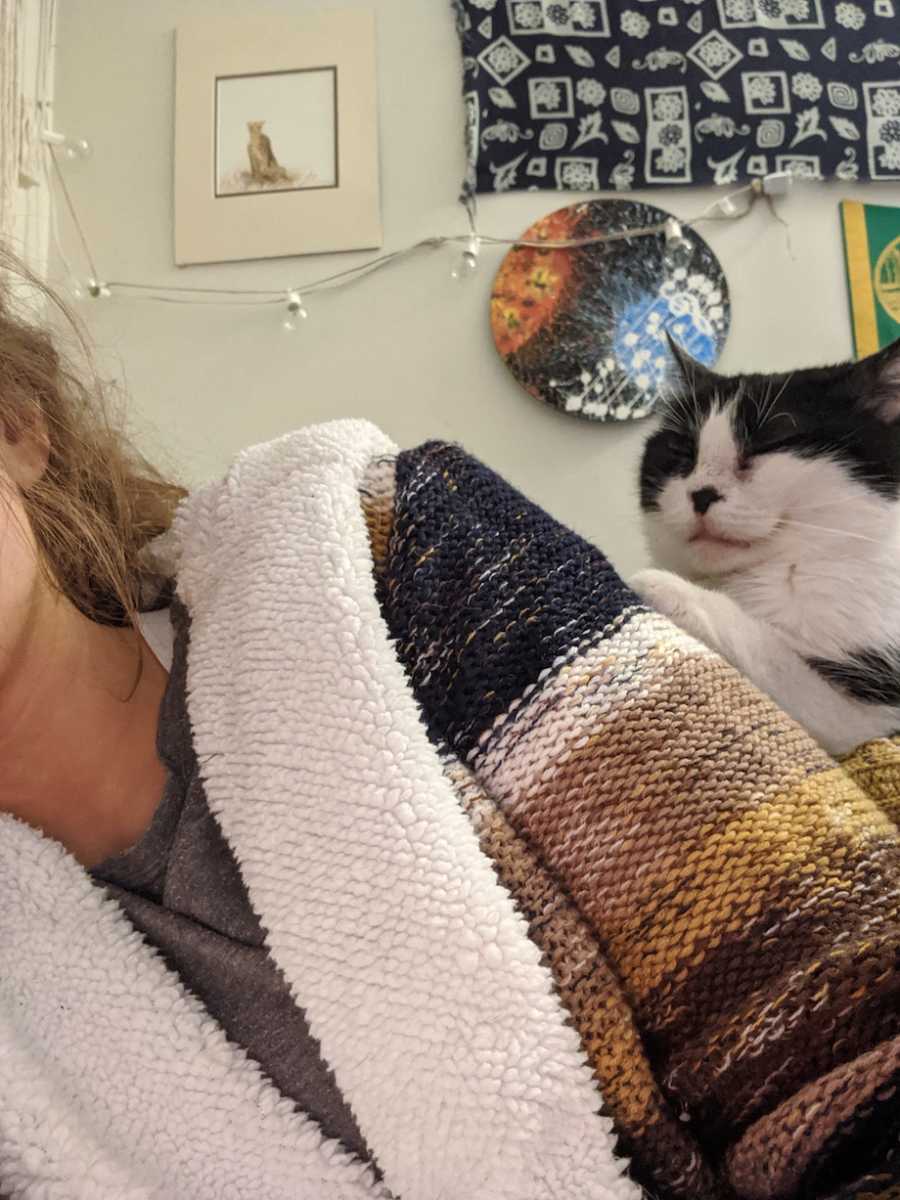
In 2018, I eventually landed a job in urban forestry. This was exciting to me, growing my resume and working on something I love. I loved being on my feet and outside all day. Until winter. I had anxiety for the impending snowy doom all summer, knowing how fickle my body was in lower temperatures.
When the time finally came, I struggled immensely. Did you ever see that scene in a Christmas Story when the kid is wearing so many layers he can’t move? That was me, an adult. My co-workers didn’t understand why I couldn’t keep up and I held resentment for a long time. It’s hard not to. Resentment towards others, and frankly, towards myself. But I understand now that it’s hard for others to understand. These symptoms are not only weird, they’re invisible.
It was during this winter, the winter of 2,000 base layers, this winter of numb feet, and frustration over not being able to do my job when half of my torso decided to exit the building. It was impossible for me not to think back to that time, 4 years ago, my leg heavy. The panic started all over again. After the numbness in my torso slowly got worse, I finally went to the doctor.
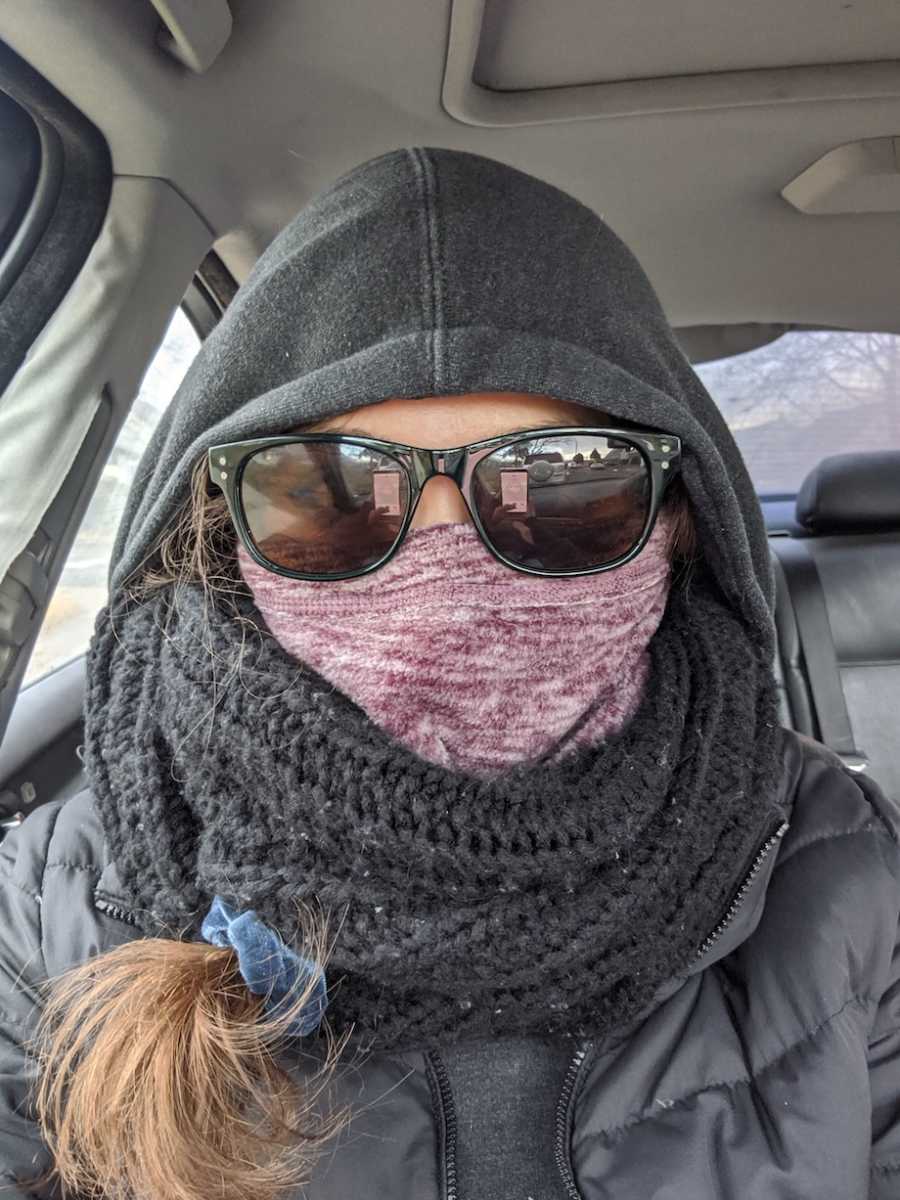
‘It’s anxiety, you have a history of it,’ he told me. I believed him. Mostly because I wanted to. He was the doctor, not me. I believed it was anxiety just like I believed that issue 4 years ago was a pinched nerve. I felt relief, and I moved on. A few weeks later, I went back. It was getting worse, new issues were popping up. The numbness in my torso was stable but I was starting to experience cold spots on my legs, only lasting a few seconds at a time. It felt as if some invisible someone was touching a large, cold spoon to my calf every few hours. Weird. Next, when I moved my neck certain ways I would feel a rush of electricity through my legs. Again, odd. Are you sensing a pattern yet?
Some symptoms were more serious, migraines were happening almost daily. Fatigue was constant and almost debilitating at this point as well. I guess it wasn’t what you think MS will look like because from the outside looking in, you couldn’t see it at all. I was still working full time, working out and running. It was all invisible to everyone but me.

Finally, 5 months after the onset of symptoms, I was able to obtain a referral to a neurologist in my area. Shortly after this and my first MRI, the diagnosis came. On a voicemail, nonetheless. Pro-tip for any doctors reading this, don’t leave a diagnosis on a voicemail. When I finally got the doctor on the phone, he told me, ‘Your MRI shows brain and spinal lesions indicative of Relapsing-Remitting Multiple Sclerosis.’ My heart sank. I felt my entire world fall out from under me. I thought my life was over. I could go into detail about the journey immediately following. Of the tears, and the home nurses, and the first medicine I tried, and then the second medicine I’m on today. But that’s a story for another day.
I’m okay. I’m good, actually. I don’t feel like I did the day I got the news, or the depression I felt the months after I got the news. It’s not all sugar plums and kittens, don’t get me wrong. There are ups and downs and entirely upside-downs. Life is now about finding balance when there seems to be none.
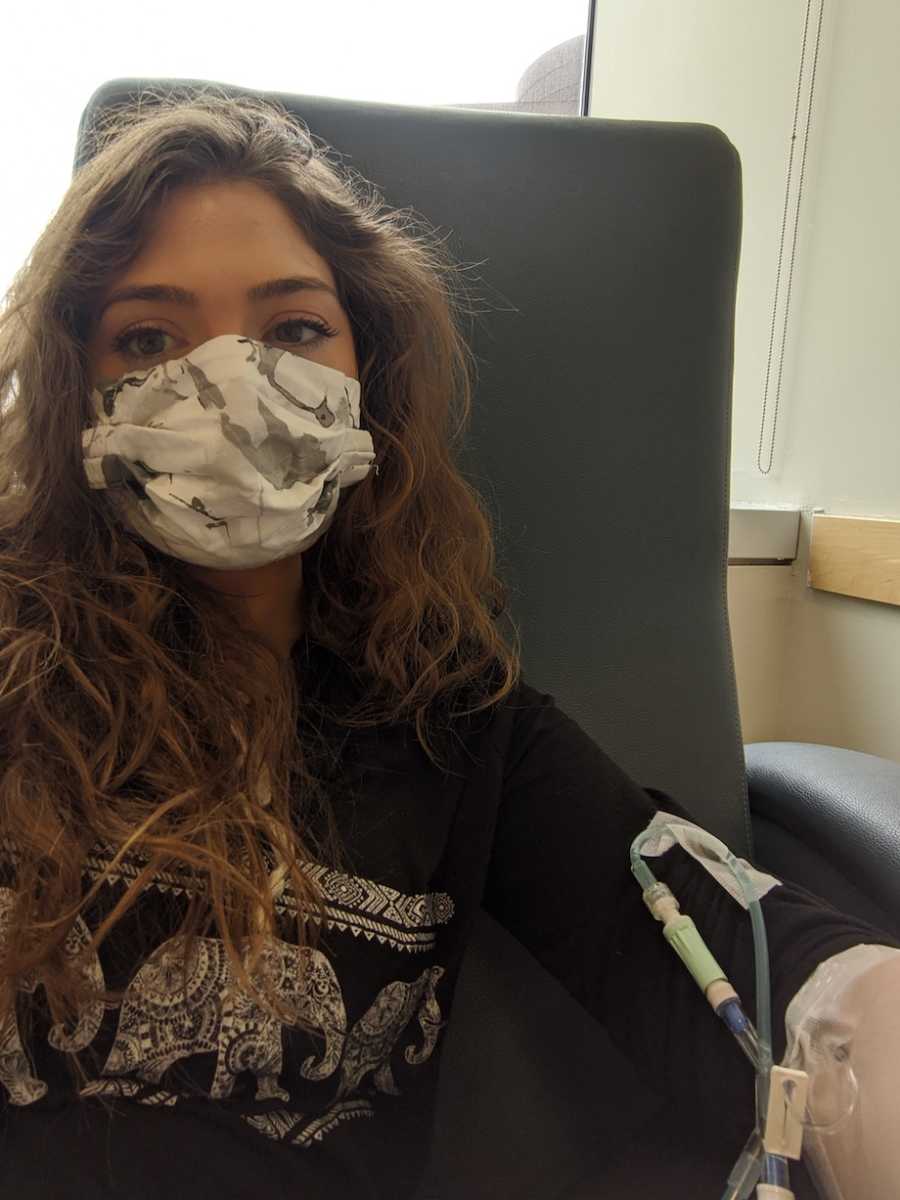
I’m learning to be an advocate for myself. I’m learning to find gratitude in my health anxiety for being aware of my body, while also learning when to reign my worries in a little bit. I’m learning not to let MS hold me back and also how to stop and rest when I need it. I’m learning I’m not alone in this battle. My doctor once explained to me they call MS a ‘snowflake disease.’ Like snowflakes, none of us beautiful, delicate little patients are exactly the same. We all have our own, unique (okay, weird) symptoms to navigate all on our own. Some are more common than others.
Fatigue is common in all of us. Vision problems as well. A little-known fact, however, is most Multiple Sclerosis patients have or will experience depression at some point. This tends to be our most invisible symptom of all, and potentially the most important in its own way. If anything is taken away from my little story today, I hope it’s if you’re struggling, or if you’re recently diagnosed and lost, you are not alone. You will actually never be alone again. There’s a lot of us MS snowflakes out there to lean on.
My last words of advice to anyone struggling with a chronic illness are this: find a doctor you feel safe with and who asks about your mental health. Ask for help when you need it. At the end of the day, you’re still as tough as hell.”

This story was submitted to Love What Matters by Rebecca K. from Philadelphia, PA. You can follow their journey on Instagram. Do you have a similar experience? We’d like to hear your important journey. Submit your own story here. Be sure to subscribe to our free email newsletter for our best stories, and YouTube for our best videos.
Read more about chronic illness:
Do you know someone who could benefit from this? Please SHARE this story on Facebook with family and friends to inspire others to live life to the fullest.




